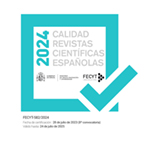Confirmando la antigüedad humana: España y los comienzos de la arqueología prehistórica
Resumen
Durante su primera visita a España en 1862, Louis Lartet, junto con Edouard de Verneuil y el ingeniero de minas Casiano de Prado, visitó el sitio arqueológico de San Isidro en Madrid. Allí descubrieron un intrumento tallado en sílex que publicaron en el Bulletin de la Société Géologique de France. Tres años más tarde, Edouard Lartet, junto con Henry Christy y Hugh Falconer, diseñaron un proyecto para llevar a cabo investigaciones prehistoricas y arqueológicas en la Península Ibérica. Tras la muerte de Christy a principios de 1865, y debido a la enfermedad de Edouard, fue Lartet quien llevó a cabo dicho programa de investigaciones prehistóricas al sur de los Pirineos. Bajo su dirección, se llevaron a cabo excavaciones en cuevas de Álava y en la Rioja. Al mismo tiempo, emergió en España un grupo de geólogos influyentes que consolidaron los principios y las prácticas de la nueva disciplina.Descargas
Descarga artículo
Licencia
La revista Complutum, para fomentar el intercambio global del conocimiento, facilita el acceso sin restricciones a sus contenidos desde el momento de su publicación en la presente edición electrónica, y por eso es una revista de acceso abierto. Los originales publicados en esta revista son propiedad de la Universidad Complutense de Madrid y es obligatorio citar su procedencia en cualquier reproducción total o parcial. Todos los contenidos se distribuyen bajo una licencia de uso y distribución Creative Commons Reconocimiento 4.0 (CC BY 4.0). Esta circunstancia ha de hacerse constar expresamente de esta forma cuando sea necesario. Puede consultar la versión informativa y el texto legal de la licencia.










